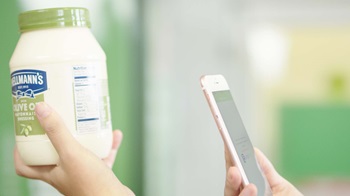How Retailer Transparency Enables Policy Makers to Promote Public Health
By: Doug Baker, Vice President, Industry Relations, FMI and Krystal Register, MS, RDN, LDN, Senior Director, Health & Well-being, FMI

Have you ever wondered how much cereal or how many sandwiches we eat? How packaged foods contribute to meeting the nutritional needs of Americans? Or how the nutrient and ingredient profiles of foods are shifting in response to consumer demands? If you have, you are not alone; many of the nation’s top nutrition experts and researchers are asking these same questions. And they’re calling on retailers for help with answers.
Almost eight years ago, a Public-Private Partnership (Partnership) was formed to create the USDA Global Branded Food Products Database (GBFPD) with the goal of strengthening public health and the open sharing of food composition data. Since the database’s launch in 2016, it has grown to include nutrient and ingredient information on over 378,000 branded and private label products. This data set is being utilized by health professionals to identify foods and portion sizes for people with various health and metabolic conditions, by web and mobile app developers to bring nutrient information to consumers in real time while shopping or dining out, and by research and policy officials to inform solutions for national health priorities such as obesity, food insecurity, and food and nutrition assistance policy. Serving as a main source of branded food composition data for the private and public sectors, USDA GBFPD is the largest publicly available database of its kind.
Private label products play a key role in feeding American families, and the Partnership aims to increase the coverage of these products in the database. While the database covers an impressive amount of the U.S. food and beverage market (an estimated 85% of sales volume based on Nielsen sales data over the last 52 weeks), the Partnership for the database is aware that private label products are underrepresented in the database. By engaging with the Partnership on this initiative, retailers can achieve greater visibility and representation of their product lines. The database provides a transparent source of information that consumers, registered dietitians, researchers, and health professionals can utilize to evaluate and recommend their products. Health and nutrition apps may also use the data as a resource to bring information to consumers on a phone or watch in real-time while shopping. This enhanced visibility strengthens the relationship between retailers and the consumer. Furthermore, retailers can ensure private label products are not overlooked as the database is used to support research and regulatory initiatives by the public and private sectors.
Are you inspired? If so, there are two options to get involved:
- Publish private label product information to the USDA via the GS1 Global Data Synchronization Network (GDSN), which is supported by all data pool providers (e.g., 1WordSync, Syndigo).
- Upload private label product label flats to NielsenIQ/Label Insight (at no charge!).
Data submitted by retailers and manufacturers can be updated at any time to ensure the USDA GBFPD reflects the most current product formulations and portfolios.
FMI supports the Partnership’s initiative to increase coverage of private label products to further support public health as well as general and policy-oriented research. We encourage all FMI members to reach out to the contacts listed below to learn more and leverage the database in your product transparency programs.
Contact Brienna Larrick at blarrick@iafns.org or Jacqueline Dougherty at jdougherty@gs1us.org for more information on how to get involved.


 Industry Topics address your specific area of expertise with resources, reports, events and more.
Industry Topics address your specific area of expertise with resources, reports, events and more.
 Our Research covers consumer behavior and retail operation benchmarks so you can make informed business decisions.
Our Research covers consumer behavior and retail operation benchmarks so you can make informed business decisions.
 Events and Education including online and in-person help you advance your food retail career.
Events and Education including online and in-person help you advance your food retail career.
 Food Safety training, resources and guidance that help you create a company food safety culture.
Food Safety training, resources and guidance that help you create a company food safety culture.
 Government Affairs work — federal and state — on the latest food industry policy, regulatory and legislative issues.
Government Affairs work — federal and state — on the latest food industry policy, regulatory and legislative issues.
 Get Involved. From industry awards to newsletters and committees, these resources help you take advantage of your membership.
Get Involved. From industry awards to newsletters and committees, these resources help you take advantage of your membership.
 Best practices, guidance documents, infographics, signage and more for the food industry on the COVID-19 pandemic.
Best practices, guidance documents, infographics, signage and more for the food industry on the COVID-19 pandemic.
